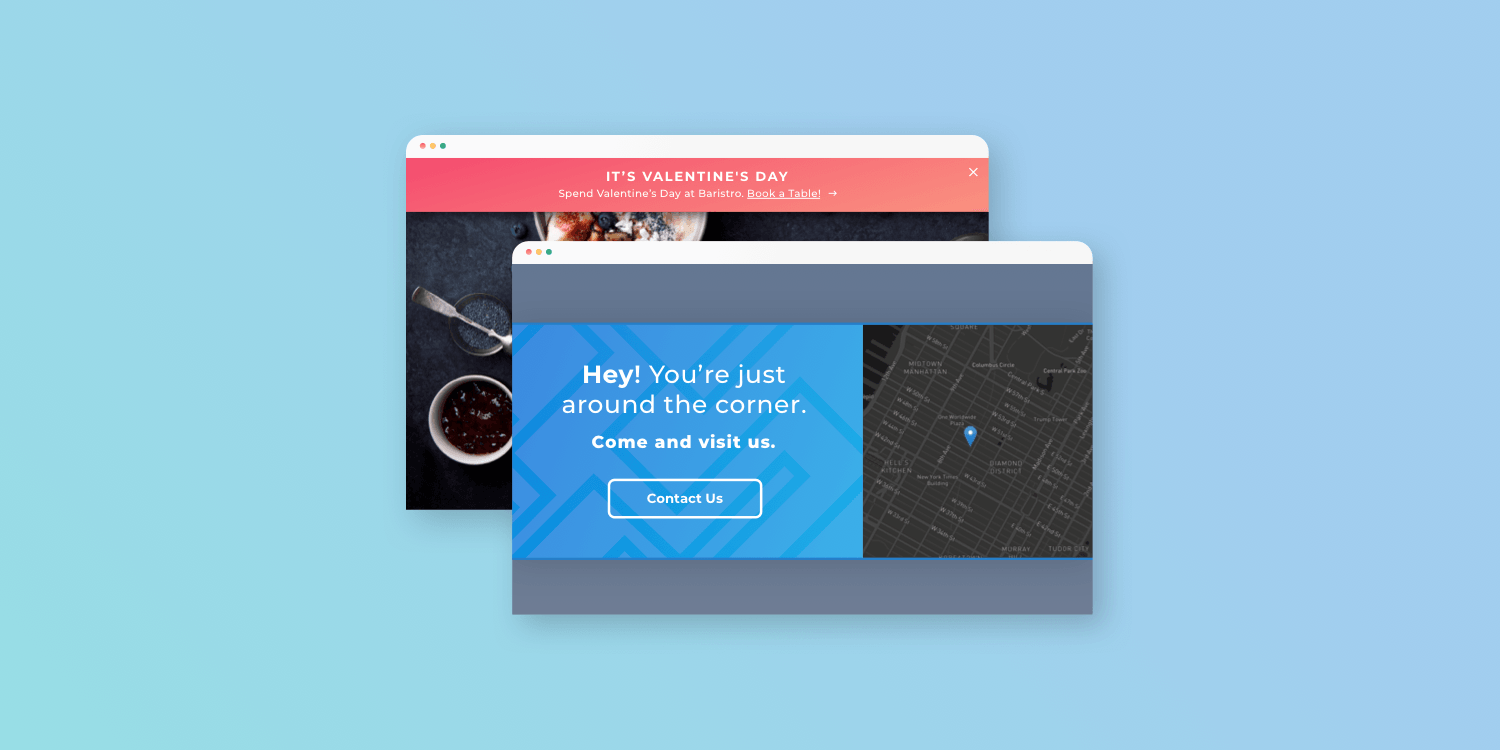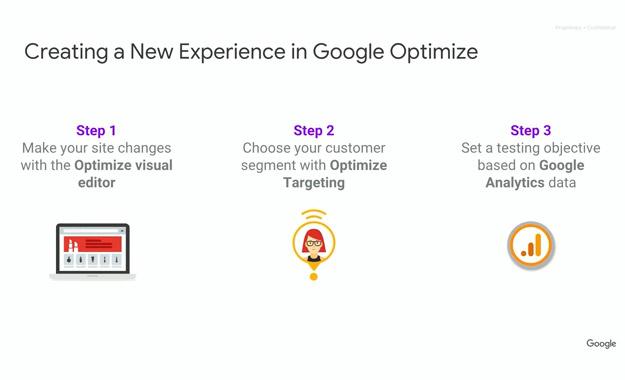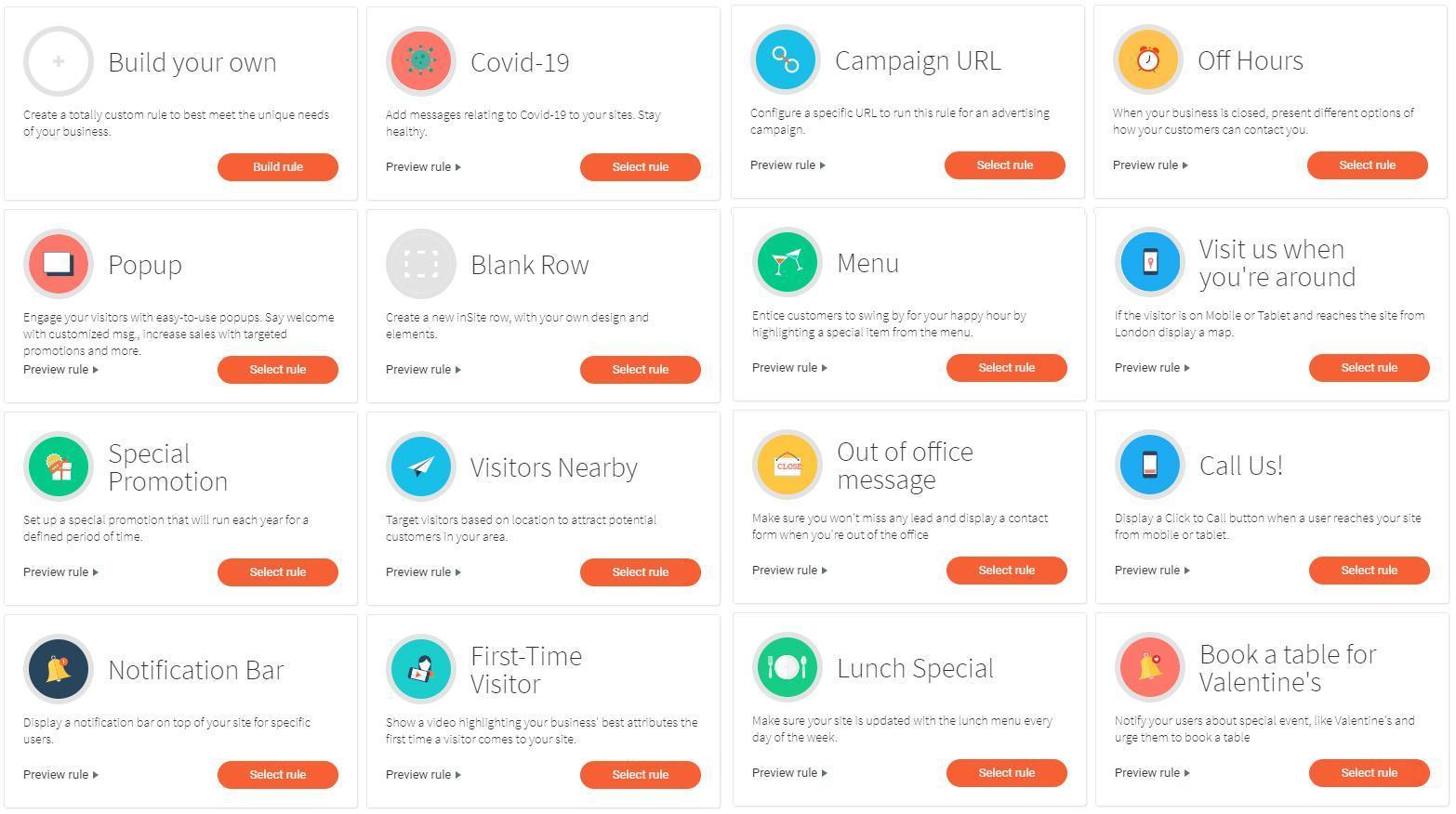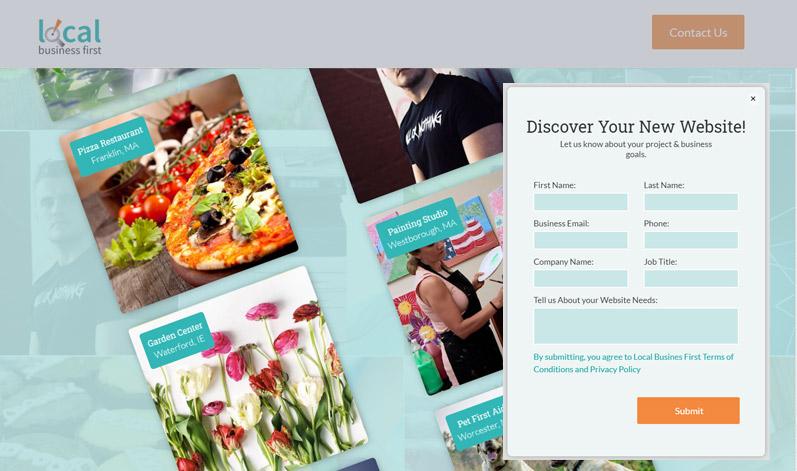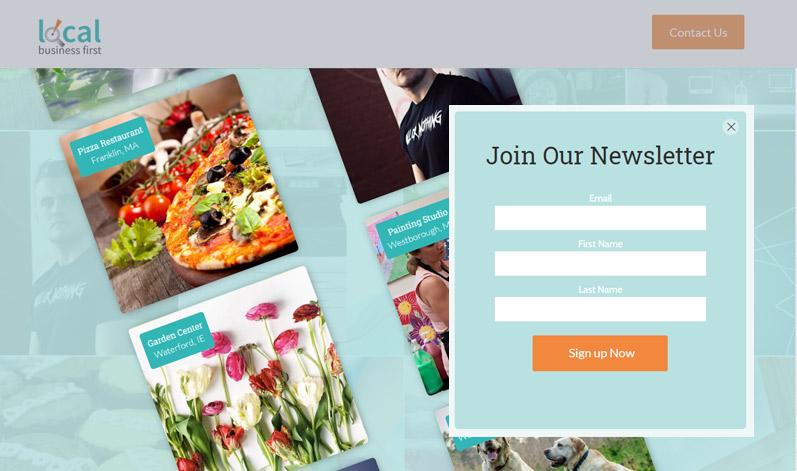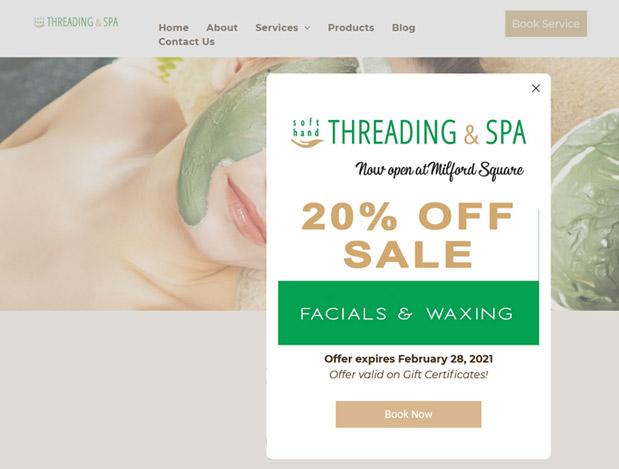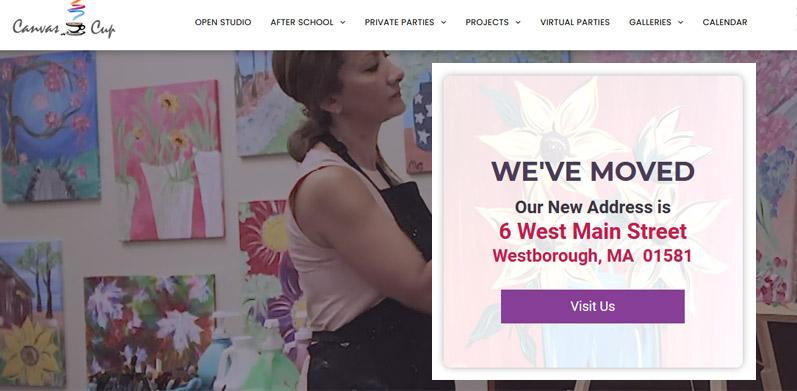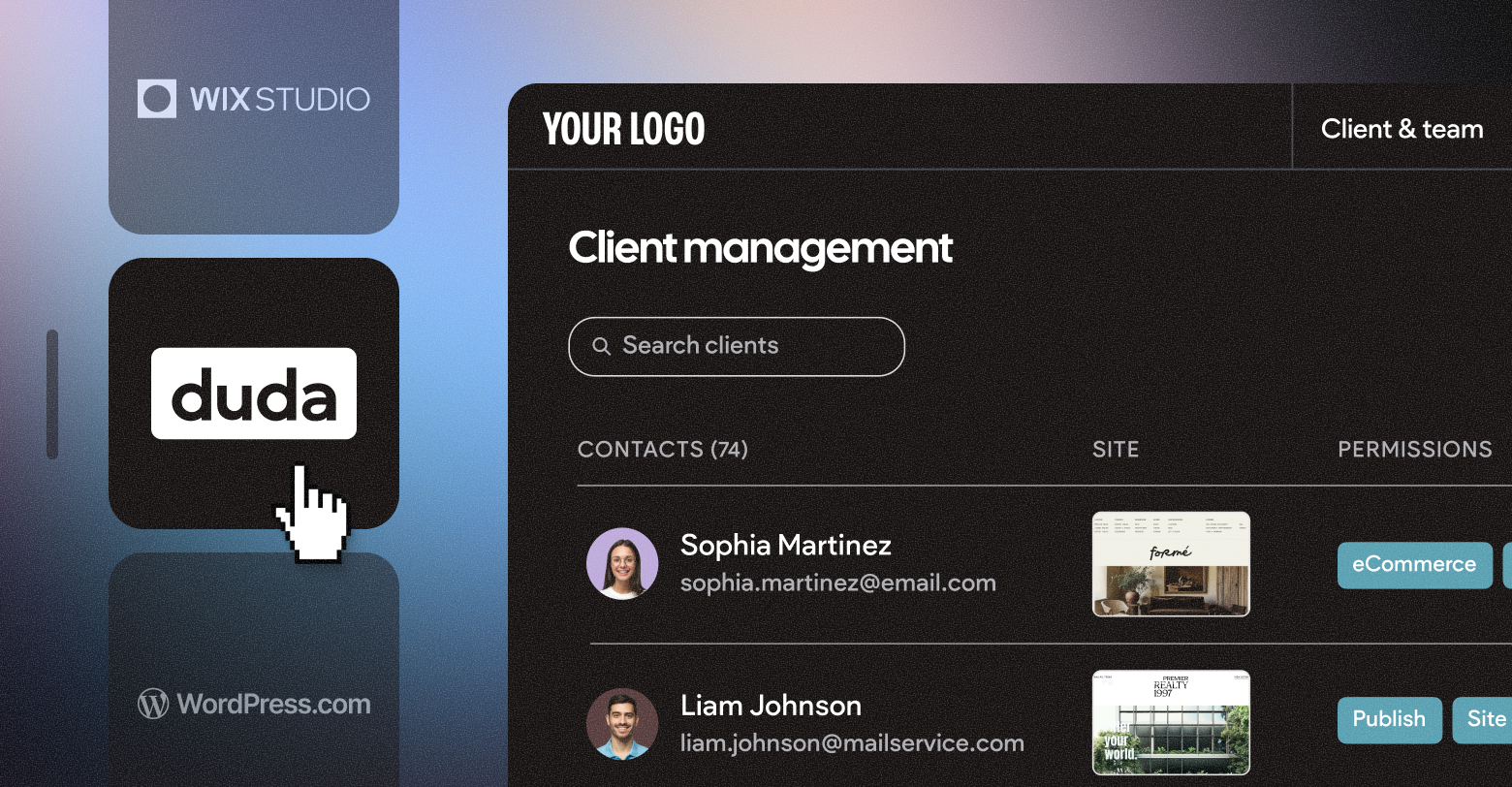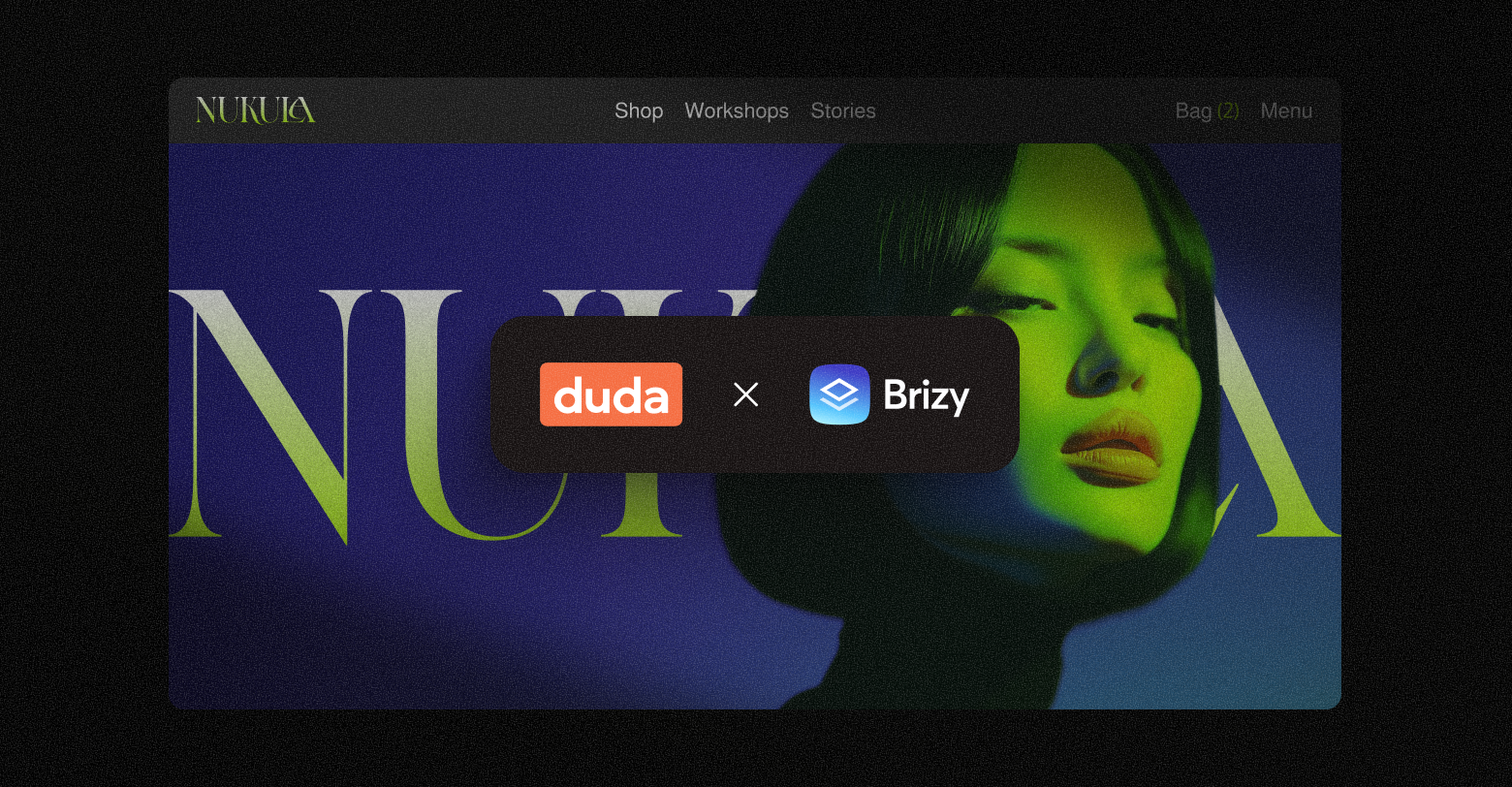Website personalization is the process of creating an exclusive, one-on-one, customized experience for visitors to a website. Based on time of day, location, number of visits to the site, past purchases and more, it tailors the experience for each individual user rather than provide a broad, uniform experience.
A new
study conducted by Forrester reports:
- 11% of companies have the right tools and technologies to run an effective personalization program
- 75% of marketing and advertising professionals believe the ability to “improve the experience of our customers” is a critical or important objective when it comes to the use of customer engagement data
In today’s world, people expect personal attention. Many of us are used to personalized experiences within our social media feeds and shopping recommendations, sometimes without even realizing it. Website visits should be no different and a
website builder can help you with that! Let's learn more.
The Difference Between Personalization and Customization
Many of us use these two terms interchangeably. However, they are different!
Personalization is the automatic tailoring of web pages, content, functionality, and experience to an individual user’s characteristics or preferences — this is accomplished with a program or app.
Customization enables users to make changes to the website experience themselves in order to meet their needs — this typically requires some sort of manual action by the user.
Here is a fun exercise to help hammer home the difference between these two actions.
Let’s say you’re about to order a latte from Starbucks. You get on the app, select the location and place your order: a grande latte with whole milk, sugar, and everything else to make it suitable to your tastes.
This is customization.
When you next go to order from Starbucks, the following happens. You open the Starbucks app; the app selects the location and automatically brings up an order of your latte - just the way you like it. All you have to do is hit the Order button.
This is personalization.
The Benefits of Website Personalization
Lots of recent research indicates that personalization of a website can boost its brand and ultimately result in higher conversion rates.
The world of marketing is constantly progressing and this can leave consumers feeling oversaturated with messaging. Competition among marketers is at an all-time high, which makes it increasingly difficult to catch a customer’s eye.
The key to overcoming this is to create personalized experiences for consumers and tailor your marketing efforts to their individual needs. Powerful personalization tools are now available to help businesses design one-on-one customer experiences that make users feel special and valued. Happy customers generate more revenue!
Better Optimized and Converting Landing Pages
Landing pages are often the first point of contact between a business and potential customer, which makes it a perfect place to add website personalization. Consumers tend to make split-second decisions when browsing the web, so personalized touches on your landing page can encourage users to stick around and continue browsing. First impressions matter when it comes to web browsing!
Here is how this looks when put into practice...
Let’s say your service is web development. Using website personalization, you may want to create a short welcome video for first-time visitors that describes your web design services. As returning visitors are probably more inclined to reach out with their information, you would probably want to opt to create a “Contact Us” popup.
Better Understanding of Your Customers
An essential part of any effective marketing strategy is understanding your target customers. With website personalization, you can begin to sort and filter different types of customers and identify how to market to each individual type. You then have the ability to display different versions of your page or popups to different target audiences, giving them more relevant experiences. Each of these individual experiences can be further refined with A/B testing.
This type of personalization is critical for increasing your customer conversion rate and creating better lead generation.
Here is how this would look in the real world...
If you’re a clothing retailer, you can use the geographic location of your customers to personalize their experiences. This means you may choose to display winter jackets to customers in Minnesota, but not to site visitors from Florida. This improves the user experience by displaying the most relevant products to their needs.
Increased Time on Site/Decreased Bounce Rate
When you provide a more personalized, relevant website experience for your users, you encourage them to browse and explore the products or services they’re likely to be interested in. As a result, they’ll spend more time on your website..
Personalizing a website will also decrease the number of users that leave it after visiting only one page (i.e., bounce rate). Right away, you want to show your users something that catches their eye and encourages them to stick around and explore your products or services. This is why it’s a good idea to personalize what the particular eye-catching thing is, as all users are different and what captures one user’s attention might not be relevant to the next.
What Is the Best Personalization Software?
There are lots of personalization tools out there and the best one for you will heavily depend on your unique needs. According to
G2, one of the largest & unbiased review websites, lists Insider, Omnisend and Duda as the top 3 Best Personalization Software in 2021. Other companies on the list include Optimizely, VMO, and Mutiny.
Here are brief overviews of each one:
- Insider is a platform powered by AI and machine-learning capabilities, delivering real-time predictive segmentation and personalization across web, mobile web, mobile app, and ad channels.
- Omnisend is a platform for eCommerce personalization. It uses personalized messages at specific times to reach shoppers and provide a tailored, unique online shopping experience.
- Duda is a web design platform for digital marketing agencies, SaaS platforms and web professionals of all kinds. In addition to the powerful design tools and advanced SEO features, Duda offers comprehensive and easy-to-use
website personalization tools.
- Optimizely creates personalized landing pages that display to different audiences depending on their persona. It also has the ability to run A/B tests on different versions of websites, helping marketers understand which versions are more effective.
- VMO is an A/B testing tool that runs multiple tests to uncover which marketing strategy or messaging has the greatest impact on users. With VMO, one can run targeted campaigns to different segments of an audience, tailoring them to their specific needs.
- Mutiny is another personalization automation tool that displays only relevant information to individual users. The platform claims that its Javascript client identifies anonymous website traffic using firmographic, contextual and behavioral data.
Are There Any Free Website Personalization Tools?
The answer is yes! Google is offering a free tool in the form of something called
Google Optimize. Also, the Duda platform offers a comprehensive suite of tools as part of their website builder, and many paid tools offer a limited free option as well.
How To Use Website Personalization Tools
Let's take a quick look at how to use a couple of the website personalization tools listed above.
How To Use the Google Optimize Personalization Tool
In order to use this tool, you have to create an Optimize account and container as described in this
support article. Once these are set up, you need to install
Google Optimize Chrome Extension.
For the sake of simplicity, we’re going to create a simple personalization experience for a website using a feature called “geotargeting” that allows you to single out visitors from a specific city, region or county.
Here are the step-by-step instructions:
- Go to
Google Optimize.
- Create a Container.
- Create a “New Experience”, (e.g., “Home Page New England Personalization”,) then enter the web page you wish to personalize.
- Select “Personalization” and click “Create.”
- Click the “Make Site Change” button and make changes to the page using the Google Visual Editor.
- Add your audience targeting rules using (in this case, “Geography”) and select a location — I selected Boston, MA for this example.
- Link to your Google Analytics property and set up a testing objective.
While this process is simple, I encountered a problem with the mobile view — it didn’t optimize consistently with the other views (cutting off of parts of images, etc.) — and I realized that this personalization is probably better accomplished through the website’s own editor.
How To Use Duda's Website Builder Personalization Tools
In our research we compared Squarespace, Wix, and Duda website builders and looked at their personalization and customization tools.
Here is what we found:
- Squarespace is very limited when it comes to personalization rules. These include promotional popups and banners, which are only available with purchase of a more expensive business plan. However, users are able to create personalized experiences using programs like 51Degrees. That being said, you’ll need to know JavaScript if you plan to use this program to implement content. The rules can be quite challenging to set up and deploy, and knowledge of this coding language is a definite necessity.
- Wix does not include any web personalization tools based on location, site visits, or user behavior.
- Duda includes very comprehensive personalization tools. They offer highly customizable personalizations that work on a system of triggers and actions. When the conditions of a trigger are met, an action occurs that personalizes the site content for that visitor. This personalization helps users create one-to-one conversion driving experiences for site visitors based on device type, number of visits to the website, time of day, geolocation, and more. Actions allow site owners and digital marketers to personalize their visitors’ experiences, ensure they find the important information they need, or push a special promotion.
Here are step-by-step instructions for using Duda's comprehensive website personalization tools:
- Log into Duda’s site builder and click on “Personalization” in the left menu.
- Click “Build a rule”.
- Choose one of the following
triggers:
- Device: The type of device a user is visiting from (desktop, tablet, or mobile).
- Location: Where a user is visiting from.
- Time: When (time/date) the user is visiting.
- Visits: The number of times the user has visited.
- Campaign URL: Whether the user gets to the site from a URL with specific parameters in the query string.
- No trigger: This rule will always be active.
- Select one of the following
actions:
- New Row: Creates a new row in your site which only displays when the conditions for the trigger are met. You can also use this to hide rows or content.
- Notification Bar: Triggers a notification bar at the top of the page.
- Popup: Triggers a popup to display on your site that grabs your user's attention.
- JavaScript: Custom JavaScript can create a huge variety of effects. We only recommend this feature for advanced users familiar with JavaScript.
- Special Effects: Special effects are a variety of decorative effects (e.g., fireworks, falling hearts, or snowflakes), which can give your site a different mood. Add this to your homepage or the entire site.
Duda has many default rules included in the platform, which are fully customizable. This makes rule creation even simpler. See the image below for a list of default rules.
Website Personalization Ideas
Below are a few interesting ways you might consider applying website personalization on the sites you build.
Website Personalization Idea #1
When a visitor comes to a website for the first time, show a popup asking which services or products are needed while also collecting their email information.
Website Personalization Idea #2
If the visitor reaches your website for the second time, display a popup with a newsletter signup, which allows customers to stay up-to-date on the business's latest initiatives and promos.
Website Personalization Idea #3
If the visitor reaches the site from a nearby location, display a sales coupon. This is especially useful for local businesses that are tied to a given geographic area (e.g., restaurants, yoga studios, salons, etc.).
Website Personalization Idea #4
If the visitor reaches your website within a certain timeframe, display a popup that highlights any important information about the business customers may need. For example, if the business that owns the site is moving to a new physical location, this is exactly the type of information that is quick and easy to communicate with website personalization.
Summing Up
As you can see, website personalization provides a richer and more relevant experience for customers and maximizes a site's performance and conversions. Engaging your first-time visitors with a welcome video, promoting a sale with a special coupon to your second-time visitor, or adding snowflakes to your page during the winter can make a huge difference when it comes to impressing your visitors. And there are lots of tools out there (especially Duda
web building platform), that make it easier than ever to add the power of personalization to the websites you create.
By Stephen Alemar
•
October 23, 2025
Discover why Duda is a top-rated website builder on G2, recognized for usability, easy setup, strong relationships, and excellent results, all backed by real reviews.
By Ilana Brudo
•
October 16, 2025
Discover why digital marketing agencies are choosing Duda over Wix Studio and WordPress for speed, reliability, and client experience, and how it helps them scale without operational overhead.
By Stephen Alemar
•
October 14, 2025
Duda vs. Brizy: Compare these website builders for agencies focused on scaling, client management, AI, eCommerce, and team collaboration.
Show More


